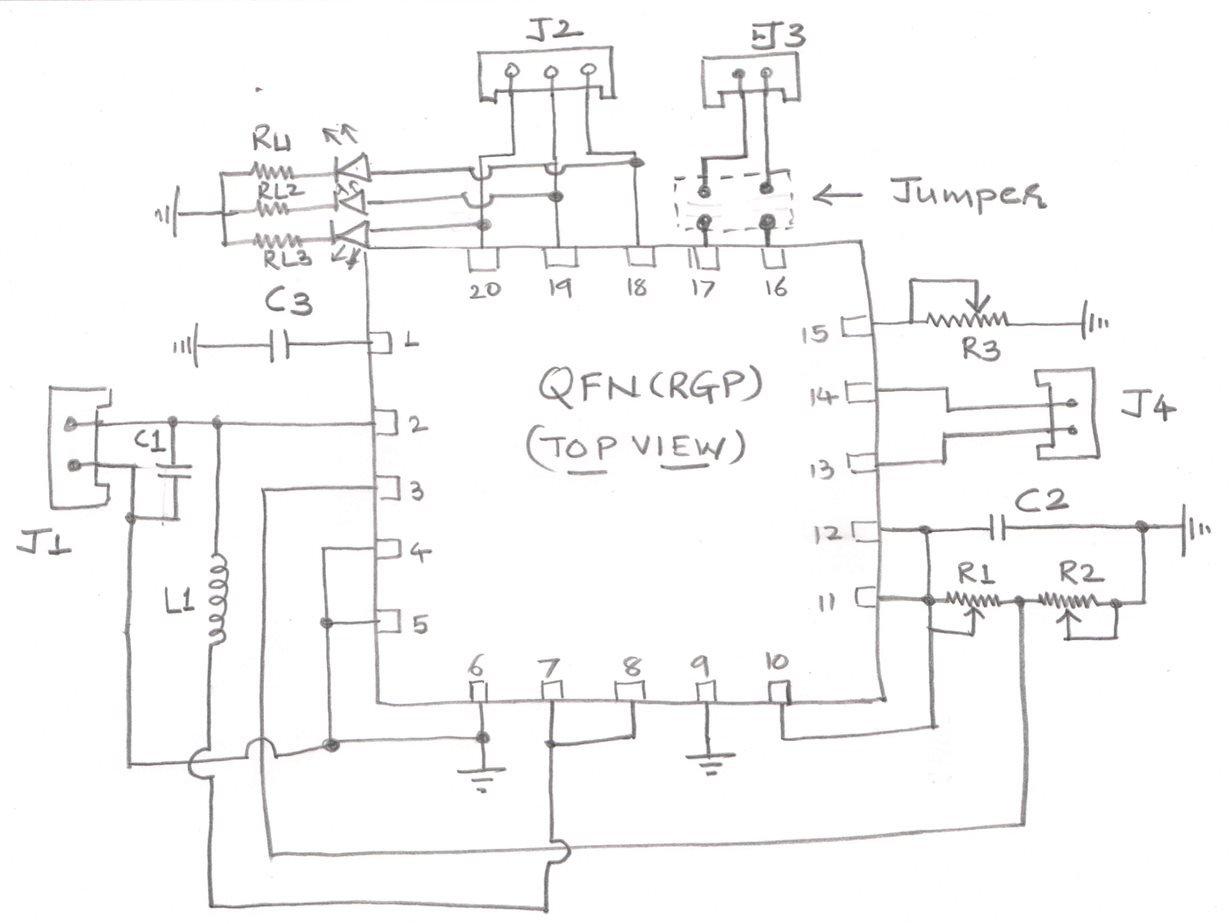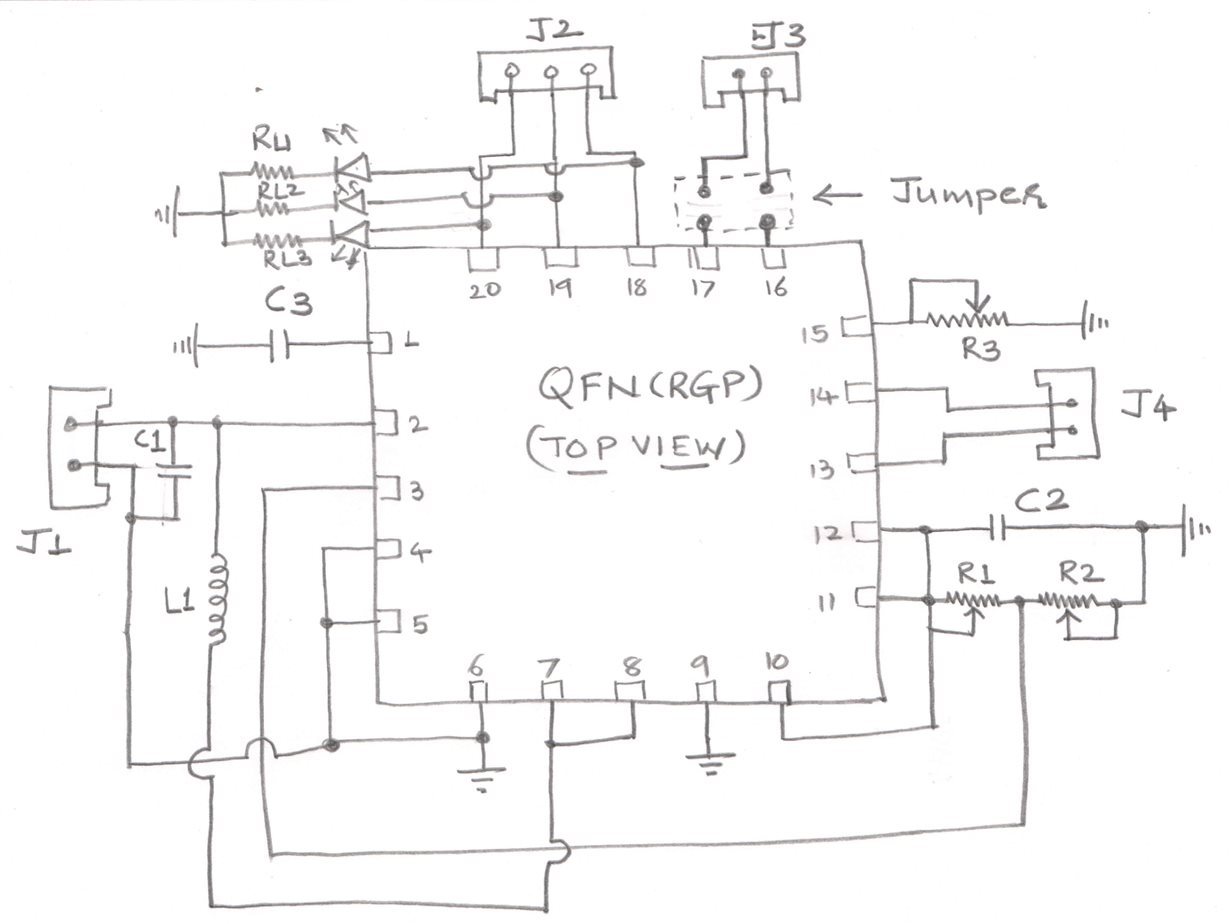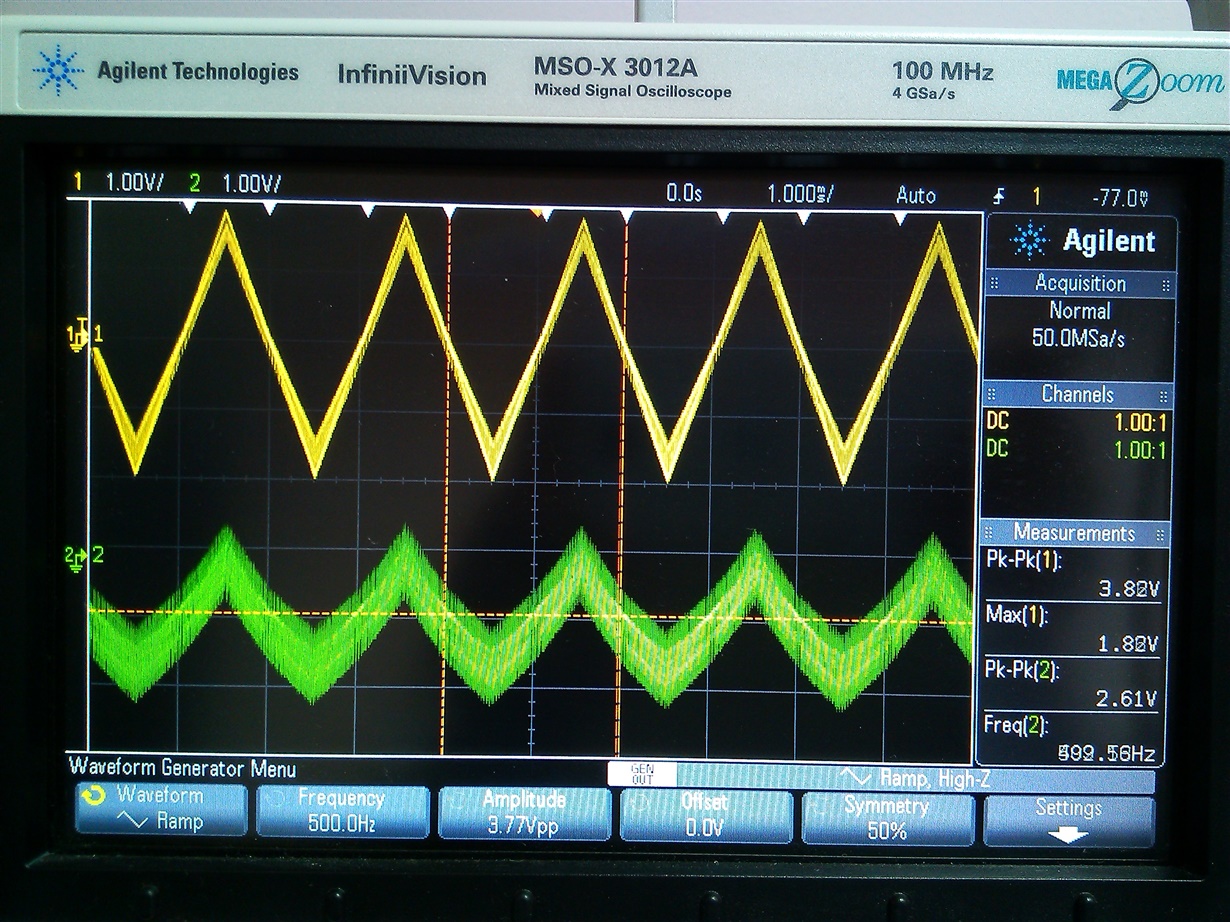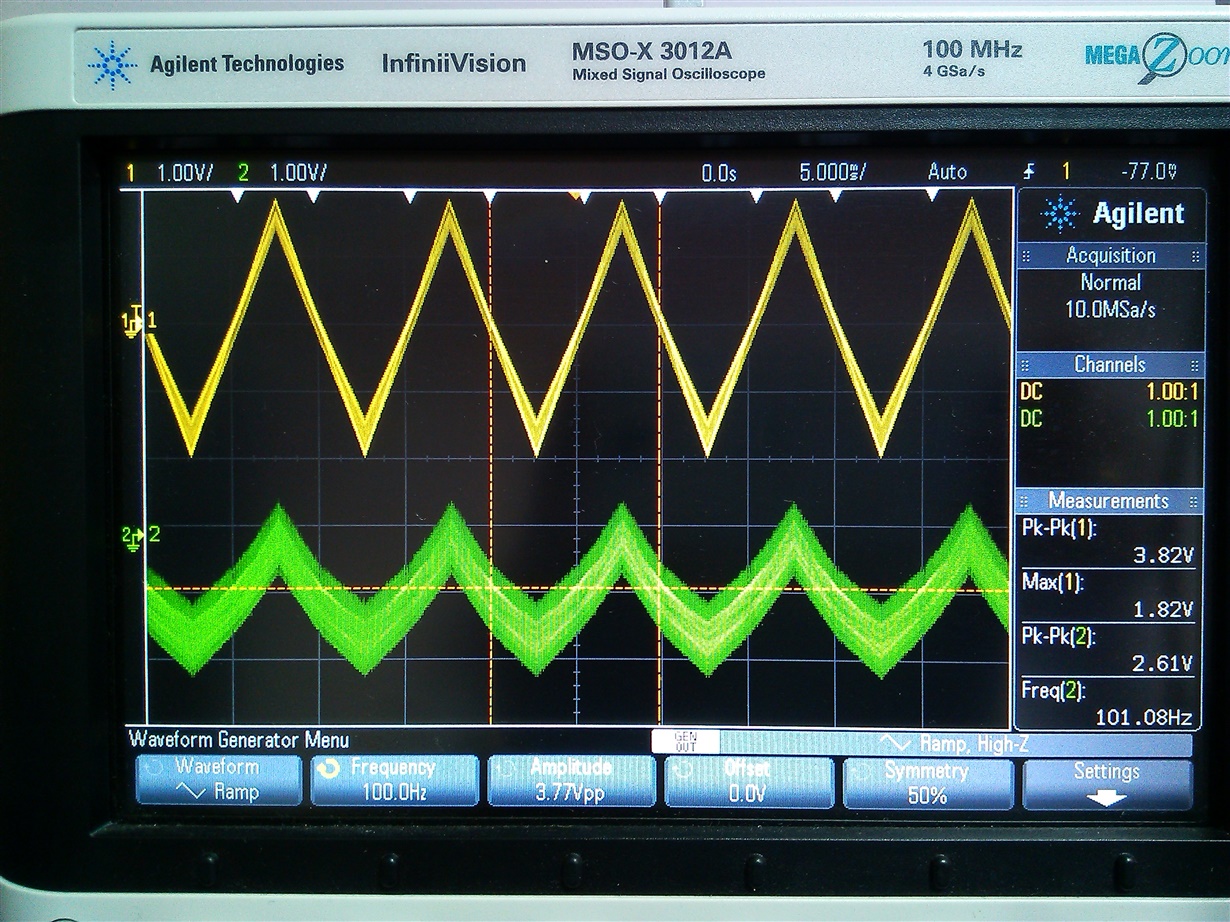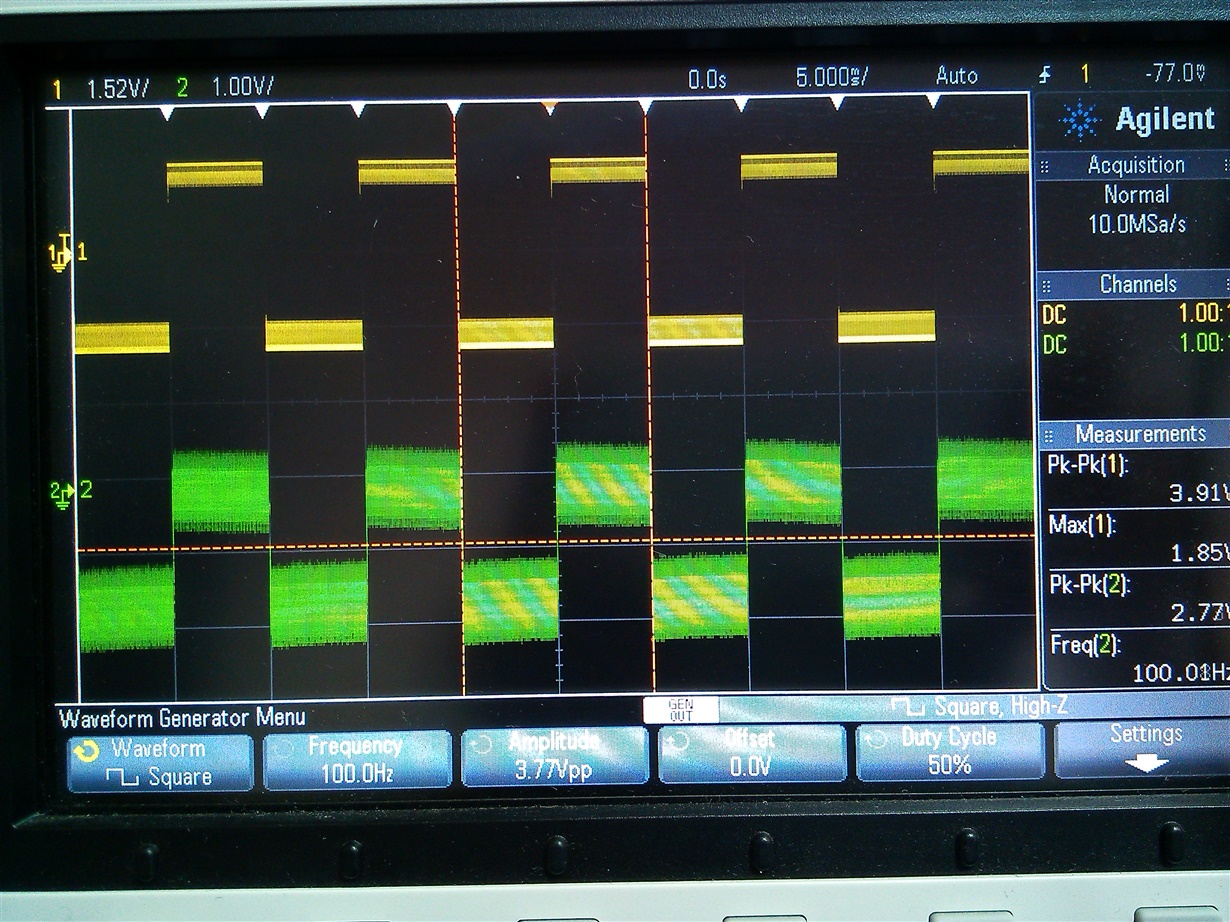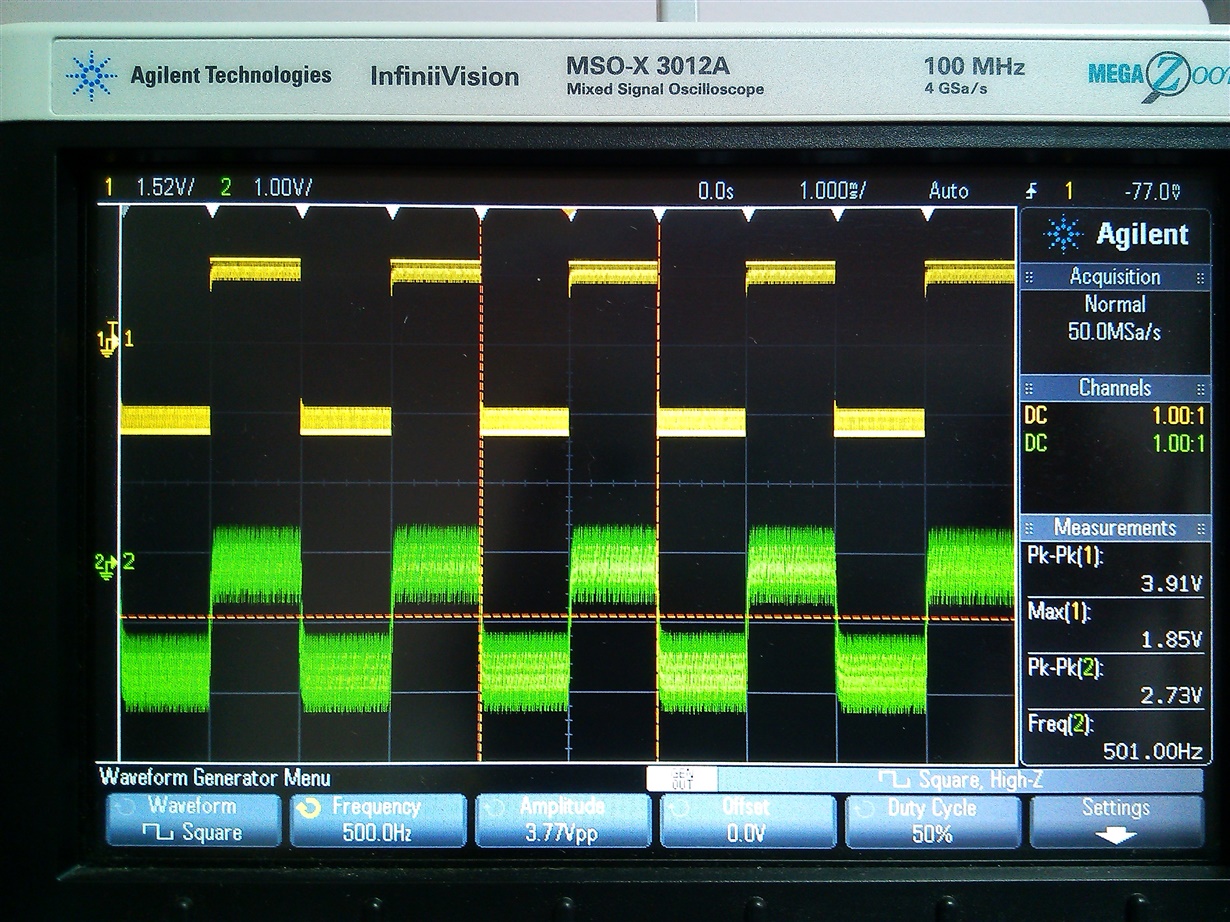Hi i am designing high voltage amplifier to drive high value resistive load, i built the circuit based on the evaluation board of DRV 8662, here i have attached the circuit diagram of this IC, please check if this is wrong, i fabricated the PCB based on this circuit, now when i tried to test this board with capacitive load of 100nF, 400V, i do not get the expected output. i applied input of 200mVpp sine wave, gain set for 100, (G0=1, Vdd, G1=0 GND, EN=1, Vdd) Vdd=5V, R1= 392k, R2= 9.76k Rext= 7.5k, L=4.7uH, now, if C1 , C2(Boost capacitor) and C3 (Pump capacitor) 100nF, but voltage rating are not matching to the specified in the Evaluation board, does it make any difference, if it makes then that may be the reason why i am not getting correct out put? anf if it works can i use the same circuit for DC voltage amplification?
-
Ask a related question
What is a related question?A related question is a question created from another question. When the related question is created, it will be automatically linked to the original question.


